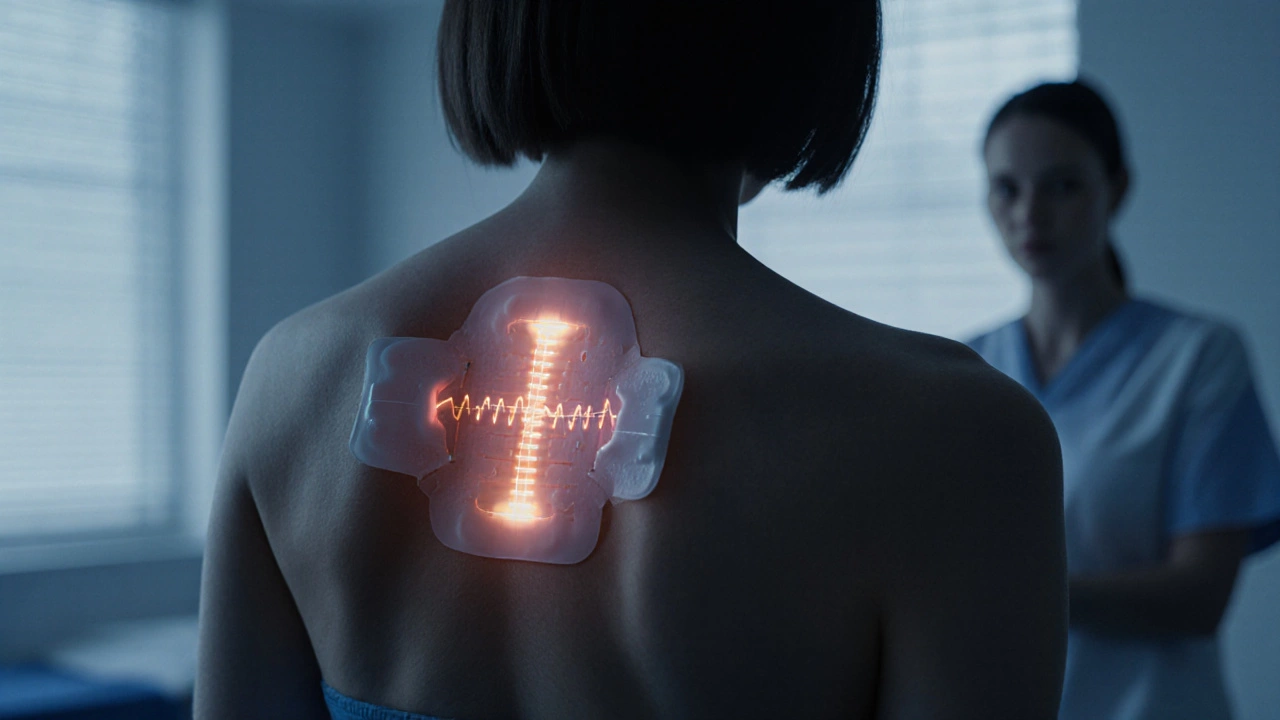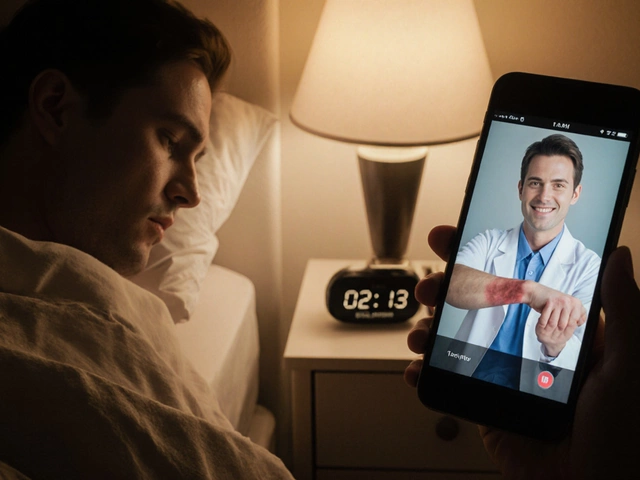Chronic Pain Management Tracker
Daily Pain Log
Personalized Recommendations
Log your pain data to receive personalized recommendations based on your patterns.
When painkillers stop working, it doesn’t mean your pain is hopeless. It means your body has adapted-and it’s time to try something else. Millions of people with chronic pain have been told to just take more pills, but that’s not a solution. It’s a dead end. If you’ve been on opioids, NSAIDs, or even antidepressants for nerve pain and still feel the same ache, burn, or throb every day, you’re not failing. Your treatment just hasn’t matched your pain yet.
Understanding Why Painkillers Fail
Painkillers work best on acute pain-like a broken bone or a surgical cut. But chronic pain? That’s different. It’s not always a signal of tissue damage anymore. After months or years, your nervous system can get stuck in overdrive. Nerves start firing without cause. The brain keeps interpreting signals as dangerous, even when nothing’s wrong. That’s why a 500mg tablet of ibuprofen might do nothing for your lower back pain that’s been there for three years.
Studies show that over 40% of people with chronic pain don’t get lasting relief from standard painkillers. The reasons? Nerve damage (neuropathic pain), central sensitization, inflammation that doesn’t respond to typical drugs, or pain tied to stress and emotional tension. Painkillers don’t fix these. They mask symptoms-and over time, your body builds tolerance. You need a new strategy.
Physical Therapies That Actually Work
Physical movement isn’t about ‘toughing it out.’ It’s about retraining your nervous system. A 2023 review in the Journal of Pain Research found that structured exercise programs reduced chronic pain intensity by 30-50% in people who’d stopped responding to medication.
- Low-impact aerobic exercise: Walking, swimming, or cycling for 20-30 minutes, 4 days a week. Start slow-even 10 minutes helps. Your body releases natural painkillers called endorphins.
- Strength training: Light resistance bands or bodyweight moves like squats and wall push-ups. Stronger muscles support joints better and reduce strain.
- Yoga and tai chi: These combine movement, breath, and mindfulness. One study showed yoga improved pain and function in chronic lower back pain better than standard care.
Don’t wait for pain to disappear before moving. Move *with* the pain. Pain during exercise doesn’t mean damage-it often means your nervous system is reacting. Work with a physiotherapist who understands chronic pain. They’ll adjust your program so you don’t flare up.
Neuromodulation: Turning Down the Volume on Pain
If your nerves are screaming, sometimes you need to interrupt the signal. Neuromodulation isn’t sci-fi-it’s FDA-approved and used in clinics worldwide.
- TENS (Transcutaneous Electrical Nerve Stimulation): A small device sends gentle pulses through sticky pads on your skin. It doesn’t cure pain, but it blocks pain signals from reaching your brain. Many users report 40-60% relief after 4-6 weeks of daily use.
- Spinal cord stimulation: A tiny wire is placed near your spine and delivers mild electrical pulses. It’s implanted, but reversible. People with failed back surgery syndrome or complex regional pain syndrome often get 50-70% pain reduction.
- Peripheral nerve stimulation: Targets specific nerves-like the occipital nerve for chronic headaches or the sciatic nerve for leg pain.
These aren’t magic. They require time and patience. But for people who’ve tried everything else, they’re game-changers.

Psychological Tools: The Hidden Pain Driver
Chronic pain and stress live in the same loop. The more you worry about pain, the more your brain amplifies it. This isn’t ‘all in your head’-it’s neuroscience.
- Cognitive Behavioral Therapy (CBT): Not talk therapy for depression. CBT for pain teaches you to spot thoughts like ‘I’ll never get better’ and replace them with ‘I can manage this flare.’ Studies show CBT reduces pain intensity and improves daily function as much as surgery for some conditions.
- Mindfulness meditation: Just 10 minutes a day of focused breathing can lower pain perception. Apps like Headspace and Calm have guided programs designed for chronic pain. A 2024 study found participants reduced their pain medication use by 35% after 8 weeks of daily mindfulness.
- Acceptance and Commitment Therapy (ACT): Instead of fighting pain, you learn to make room for it while still doing what matters-spending time with family, working, walking the dog. It’s not about being happy. It’s about being alive.
These tools don’t erase pain. They change your relationship to it. And that’s where real freedom begins.
Alternative Approaches: Evidence-Based, Not Just Trendy
Not every alternative therapy works-but some have solid data.
- Acupuncture: The WHO and NIH recognize it for chronic back, neck, and knee pain. It doesn’t just stimulate endorphins-it may reset how your brain processes pain signals. Look for a licensed practitioner.
- Heat and cold therapy: Heat relaxes tight muscles. Cold reduces inflammation. Try a heating pad before bed or an ice pack after activity. Alternate them for best results.
- Massage therapy: Especially myofascial release. It helps break up adhesions in connective tissue that can trap nerves and cause referred pain.
- Dietary changes: Inflammation fuels chronic pain. Cut processed sugar, refined carbs, and industrial seed oils. Add omega-3s (fatty fish, flaxseed), turmeric, ginger, and colorful vegetables. One 2024 trial showed a Mediterranean-style diet reduced pain scores by 32% in people with osteoarthritis.

When to See a Pain Specialist
General practitioners aren’t trained to handle complex chronic pain. A pain specialist is a doctor who focuses only on this. They know:
- Which nerve blocks work for which type of pain
- When to consider intrathecal drug pumps
- How to combine therapies safely
- Which medications are outdated or risky long-term
Don’t wait until you’re desperate. If you’ve been on painkillers for more than 3 months with little relief, ask for a referral. In Australia, many public hospitals have pain clinics. Private specialists are also covered under Medicare with a GP referral.
What Not to Do
When painkillers fail, people turn to dangerous fixes:
- Increasing doses: More pills don’t mean more relief-they mean more side effects, addiction risk, and organ damage.
- Self-medicating with alcohol or cannabis: Cannabis may help some, but unregulated products can worsen anxiety and sleep. Alcohol is a depressant that amplifies pain sensitivity over time.
- Isolating yourself: Loneliness raises cortisol, which increases inflammation and pain perception.
- Waiting for a miracle cure: There’s no single pill, potion, or device that fixes all chronic pain. Real progress comes from stacking small, consistent changes.
Your Action Plan
Start here, even if you’re in pain:
- Track your pain: Use a simple app or notebook. Rate pain 1-10, note what you did, ate, or felt emotionally that day. Patterns will show up.
- Move for 10 minutes a day: Walk around the block. Stretch on the floor. Don’t wait for motivation-do it before you feel like it.
- Try one non-drug therapy: Pick one: TENS, mindfulness, or a weekly massage. Stick with it for 6 weeks.
- Ask your GP for a referral: To a physiotherapist, psychologist, or pain clinic. Don’t accept ‘take more pills’ as an answer.
- Connect with others: Join a chronic pain support group. You’re not alone. And hearing how others manage gives you new ideas.
Pain doesn’t have to be your whole life. It can be a part of it-something you manage, not something that manages you. It takes work. But the work is worth it.
What if nothing works for my chronic pain?
If you’ve tried multiple therapies with no relief, it’s time to see a multidisciplinary pain clinic. These teams include doctors, physios, psychologists, and occupational therapists who design custom plans. There’s no one-size-fits-all, but almost everyone finds *some* combination that improves quality of life-even if pain doesn’t vanish completely.
Can I stop taking painkillers cold turkey?
No. Stopping opioids or even high-dose NSAIDs suddenly can cause dangerous withdrawal, rebound pain, or increased sensitivity. Always work with a doctor to taper off safely while introducing alternative therapies. Your body needs time to adjust.
Does chronic pain ever go away completely?
For some people, yes-especially if the root cause (like an infection or injury) is treated. But for many, chronic pain becomes a long-term condition like high blood pressure. The goal isn’t always elimination-it’s control. Many people live full, active lives with pain levels they can manage, even if it never hits zero.
Are there any new treatments for chronic pain in 2025?
Yes. Ketamine infusions are now used more widely for treatment-resistant nerve pain. Low-dose naltrexone (LDN), originally for addiction, is showing promise in reducing inflammation and pain in fibromyalgia and autoimmune conditions. Also, wearable neurostimulation devices are becoming smaller, cheaper, and more effective-some even sync with your phone.
How do I know if my pain is nerve-related?
Nerve pain (neuropathic pain) often feels like burning, tingling, electric shocks, or numbness. It may spread beyond the original injury site. If pain feels ‘alive’ or moves around, or if light touch hurts (allodynia), it’s likely nerve-related. These types respond poorly to standard painkillers but may improve with gabapentin, pregabalin, TENS, or nerve blocks.
Managing pain without painkillers isn’t about being strong. It’s about being smart. It’s about using every tool available-physical, psychological, and technological-to take back control. You’ve already survived the hardest part: the belief that nothing else could help. Now it’s time to try the next thing.





